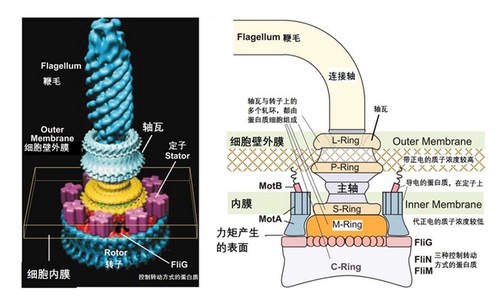(Minghui.org) The theory of evolution by natural selection has faced many challenges since Charles Darwin published it in his 1859 book On the Origin of Species. The theory contradicts various faith systems and even modern scientific discoveries have also proven that the three evidences of evolution (namely, anatomy, the similarity of embryos, and archaeology) are all groundless. Molecular biology and genetics have further shown that evolution theory is impossible. In fact, even Darwin himself was timid and doubtful when he first brought up the hypothesis of evolution.
Nonetheless, after On the Origin of Species was published in 1859, it quickly drew lots of attention. Karl Marx, who had published The Communist Manifesto 11 years before, embraced it and wrote in 1860 that “Darwin’s book is very important and serves me as a basis in natural science for the class struggle in history.”
Both Darwin and Marx grew up in religious families and studied theology themselves in their early years. They, however, went on to establish the two atheistic systems, evolution theory, and communism, respectively. One monk in Mongla, Myanmar, said Darwin was the reincarnation of a demon king. Like Marx, he came to this world to destroy mankind. Minghui.org has published multiple articles, such as “Why Does the Atheistic Chinese Communist Party Require Members to Pledge Perpetual Allegiance?” that analysed Marx and communism. In this three-part series, we focus on Darwin’s life and his evolution theory.
(Continued from Part 1)
2. Loopholes of the Evolution Theory
PBS reported in its “Evolution” series in 2001 that virtually every scientist in the world believed in the theory of evolution. This triggered an intense reaction from the public. Over 500 scientists, all with Ph.D. degrees, signed a statement in 2006, publicly expressing their skepticism about the Darwinism evolution theory.
“Darwinists continue to claim that no serious scientists doubt the theory and yet here are 500 scientists who are willing to make public their skepticism about the theory,” remarked John G. West, associate director of Discovery Institute’s Centre for Science & Culture. “Darwinist efforts to use the courts, the media, and academic tenure committees to suppress dissent and stifle discussion are in fact fueling even more dissent and inspiring more scientists to ask to be added to the list.”
Australian molecular biologist Michael Denton summarised evidence against evolution in his 1986 book Evolution: A Theory in Crisis. “Nowhere was Darwin able to point to one bona fide case of natural selection having actually generated evolutionary change in nature… Ultimately, the Darwinian theory of evolution is no more nor less than the great cosmogenic myth of the twentieth century.”
In fact, Darwin himself considered evolution as a hypothesis and hoped later generations would find evidence to prove it. But more and more contradictory discoveries have emerged. The evolution theory proposed the transmutation of species through natural selection. It also claimed support from comparative anatomy, paleontology, and embryonic development. But all these have now been disapproved of by modern science.
Comparative Anatomy: A Circular Argument
The evolution theory hypothesised that, if humans came from apes, these two must share similarities. Because humans and apes do share many things in common, the evolution theory thus concluded that humans indeed evolved from apes.
But such logic is flawed and one cannot conclude apes are ancestors of humans just because the two share some similarities.
One example that illustrates the point is that, if Joe is Jack’s son, he must be younger than Jack. But just because Ava is younger than Amelia, we cannot assume she is Amelia’s daughter.
But in comparative anatomy, homology is defined as similarity due to common ancestry and the existence of homology is then used as evidence for common ancestry. Jonathan Wells, author of Icons of Evolution: Science or Myth, believed this is “a circular argument masquerading as scientific evidence.”
The Hoax of Embryonic Development
In 1866, German biologist Ernst Haeckel proposed the idea of recurrence, i.e., the embryonic development of higher organisms will reproduce the evolution process from lower species to higher ones. For example, as the human embryo develops inside the uterus, it must have gone through different stages of evolution, such as having gills like a fish, a tail like a monkey, and so on. This is a classic case of circular reasoning, using the theory of evolution to prove the theory of evolution.
Haeckel’s early experience was quite similar to Darwin’s. He studied medicine according to his father’s wish in college, but he liked biology better. As Darwin published On the Origin of Species in 1859, Haeckel completed his doctorate in zoology and became a loyal supporter of Darwin.
Historians noted that Haeckel was not only a biologist but also a passionate artist who paid attention to many fine details in his artworks. Unfortunately, he used such skills to distort embryo pictures to support his hypothesis of recurrence. For example, he painted human embryos to look like fish, and he deliberately and fraudulently modified human and dog embryos drawn by other scientists to increase the similarities between embryos of different species and hide their differences.
In 1866, Haeckel published a set of 24 pictures of embryos in General morphology of organisms: general foundations of form-science, mechanically grounded by the descendance theory reformed by Charles Darwin. In 1874, he again included these graphs in his more popular book The History of Creation. In the graphs, he intentionally modified the three stages of development of a fish, salamander, turtle, chicken, pig, cow, rabbit, and human embryo. These pictures were later compiled into biology textbooks, deceiving generations of students who did not know the truth and blindly believed in the theory of evolution.
In 1997, British embryologist Michael Richardson organised scientists from 17 institutions to study the embryos and their growth process of 50 different vertebrates, and carefully observed and recorded them. In August 1997, they jointly published the results in an article on Anatomy and Embryology titled “There is no highly conserved embryonic stage in the vertebrates: implications for current theories of evolution and development.” They found that Haeckel not only added and deleted but also modified the structures of the embryos.
“Contrary to recent claims that all vertebrate embryos pass through a stage when they are the same size, we find a greater than 10-fold variation in greatest length at the tailbud stage,” wrote the authors. “Our survey seriously undermines the credibility of Haeckel’s drawings, which depict not a conserved stage for vertebrates, but a stylised amniote embryo.”
In his 1977 book The Beginnings of Human Life, German human embryologist Erich Blechschmidt proved with detailed data that human fetuses are all human structures from the beginning. Speaking of Haeckel’s theory, the book wrote, “The so-called basic law of biogenetics is wrong. No buts or ifs can mitigate this fact. It is not even a tiny bit correct or correct in a different form. It is totally wrong.”
Findings from Paleontology
The theory of evolution outlines a long process of life from simple to complex through natural selection. This was described as an “evolutionary tree” in which organisms developed from low to high organisms. However, more and more archaeological discoveries prove that the theory of evolution cannot justify itself. For example, archaeologists Michael A. Cremo and Richard Thompson listed 500 cases that contradicted the theory of evolution in their 1994 book, The Hidden History of the Human Race: Major Scientific Coverup Exposed. The relics found in many parts of the world proved that human civilisation had existed as early as tens of thousands, or even hundreds of millions of years ago.
Here are a few examples. Darwin’s theory of evolution believes that human beings appeared about 10,000 years ago, and the first living organisms appeared no more than 580 million years ago. However, a nuclear reactor built 2 billion years ago was discovered in the Republic of Gabon, Africa, in 1972; many exquisite stone tools were unearthed in 1880 at the foot of Mount Taibo in California, USA, dating back 55 million years; archaeologist Y. Druet found some different types of metal pipes in 1968 from a limestone layer in France, and the age of the rock layer is 65 million years; a batch of iron spears identified by American geologist Virginia Steen-McIntyre were made 250,000 years ago.
The archaeological community has also discovered that many species have “refused” to evolve after hundreds of millions of years. This is undoubtedly another heavy blow to the theory of evolution. For example, the lamprey fossils discovered in Inner Mongolia can be traced back to the Early Cretaceous 125 million years ago. Researchers at the University of Kansas in the United States found that today’s lampreys have no developmental stages, morphological characteristics, and living habits that were 125 million years ago. What a difference. In addition, scientists have also discovered bees that pollinated hundreds of millions of years ago, ferns that have not evolved for nearly 200 million years, and coelacanths that have not changed their mating habits for 400 million years.
On the issue of the transition from apes to humans, evolutionary scientists have yet been able to find the fossils of the transition species “ape-like man.” As a result, some scientists resorted to intentional or unintentional academic fraud. The transitional fossil between humans and apes, Java Man, allegedly discovered in 1892, proved to be a piece of ape skull and a human leg bone 40 feet apart; The ape-man fossil “Lucy” was proved to be an extinct ape – Australopithecus, which had nothing to do with humans; Since 1861, paleontologists successively discovered six “Archaeopteryx fossils,” which caused a sensation in the world and became a model of transitional species between birds and reptiles, but 5 of them were later identified as artificial, and the discoverer of the remaining fossil firmly refused any identification. The original “discoverer” confessed one of the reasons for the falsification: he placed too much belief in evolution.
3. Molecular Biology
Darwin’s theory of evolution was published in 1859. In 1866, the Austrian Catholic monk Gregor Mendel published the paper “Experiments on Plant Hybridisation,” which gave birth to genetics. But Mendel’s contribution was not discovered until half a century after his death. Later on, the marriage of evolution and Mendel’s ideas formed the neo-Darwinism of modern synthesis.
In the 1950s, American James Watson and British Francis Crick discovered the three-dimensional structure of the DNA double helix using X-ray microscopy. Crick established the synthesis process from DNA to RNA and then to protein. At that time, many scientists believed that natural selection occurred through gene mutation. But a closer look at the biological system shows it is too complicated to be produced by random mutation.
Complexity and Systemicity of Unicellular Flagella
Flagella is a long and thin protein molecule that grows on the surface of many unicellular organisms and some multi-cellular organisms. Its structure is very similar to that of an engine, including stators, rotors, main shafts, bearing bushes, linkage rods, adjustment and braking systems, and so on. The length of the flagella is about 15,000 nanometers, and the diameter of the thickest part is about 20 nanometers. The speed of the flagella motor is on the order of 100 times per second, and the control is precise, and it can brake and turn within a quarter of a circle.
Common bacterial flagella can run a distance of 60 to 100 times their own body length in one second, far surpassing that of a cheetah. Bacterial flagella are considered to be the most efficient and sophisticated molecular engines and nanomachines in nature, as well as one of the most complex protein machines, capable of rotating 300-2,400 revolutions per second. Due to its high complexity and system, the flagellar motor has always been a difficult point in the research of microbiology, biochemistry, biophysics, and structural biology.

How did flagella evolve? It is hard to be explained by Darwin’s theory of evolution. The flagella motor is composed of about 50 parts and about 30 kinds of protein molecules. These must be systematically combined and exist at the same time according to the specific internal mechanism in order to operate normally. In any case, it is impossible to start from a simple structure evolved one step at a time. Just like a Swiss watch, without any part, it cannot function normally. It can only be manufactured and installed according to strict procedures, and it cannot evolve spontaneously and randomly.
Cells: factories of irreducible complexity
Compared to flagella, the structure, and operation of a cell are much more complicated, both physically and biochemically.
Under the control of DNA, hundreds of thousands of protein molecules can be produced inside each cell, with a total number of tens of millions. Cells divide once every few hours. This production efficiency depends on many advanced “production lines” like a modern large-scale factory integrating intelligence, information, and digitalisation. It has workshops, production equipment, packaging offices, control centers, communication platforms, transportation systems, and waste disposal stations. There are complete functions and a clear division of labor subsystems.

Using the examples of vision, blood-clotting, cellular transport, and more, biochemistry professor Michael Behe found the biochemical world comprises an arsenal of chemical machines with finely calibrated, interdependent parts. He referred to this as irreducible complexity.
“In the abstract, it might be tempting to imagine that irreducible complexity simply requires multiple simultaneous mutations – that evolution might be far chancier than we thought, but still possible. Such an appeal to brute luck can never be refuted,” he wrote in Darwin’s Black Box: The Biochemical Challenge to Evolution. “Luck is metaphysical speculation; scientific explanations invoke causes.”
Evolution Through Gene Mutation: 10 Trillion Earths Are Needed
In addition to archaeologists and biologists, some mathematicians have also questioned the theory of evolution. In the 1950s, American Manhattan Project engineer Stanislaw Ulam believed from a mathematical point of view that there is a large amount of life information in DNA, and nature cannot completely rely on random processes to generate such information.
American molecular biologist Douglas Axe also did his calculation, assuming starting from the birth of the earth to the present, all atoms on the earth are used to form amino acids, and all amino acids participate in the permutation and combination experiments of random mutations. If the experiment is repeated every minute, to produce a normal protein molecule from the experiment through random mutation, it needs 10 trillion earths to do the experiment at the same time. Obviously, this is impossible.
In 2019, Behe published a new book with the title of Darwin Devolves: The New Science About DNA That Challenges Evolution. “A system of natural selection acting on random mutation, evolution can help make something look and act differently. But evolution never creates something organically,” he wrote.
In fact, the mutation is a process of devolution—damaging cells in DNA in order to create something new at the lowest biological levels. “A process that so easily tears down sophisticated machinery is not one which will build complex, functional systems,” Behe concluded.
(To be continued)
Darwin and the Loopholes In His Theory of Evolution (Part 1)
Darwin and the Loopholes in His Theory of Evolution (Part 3)

